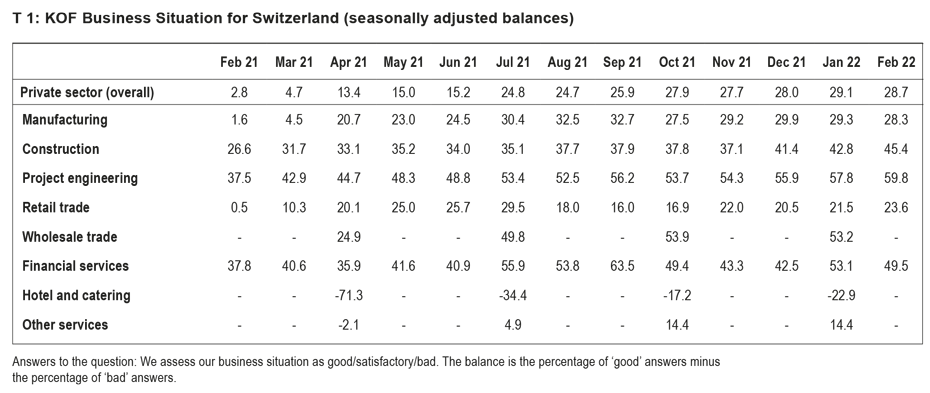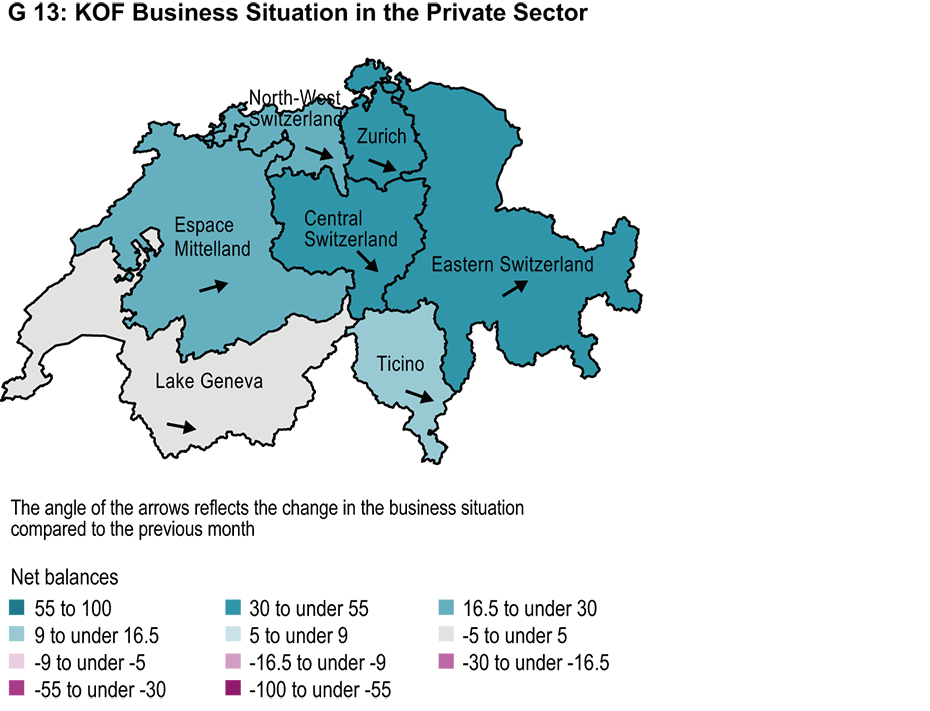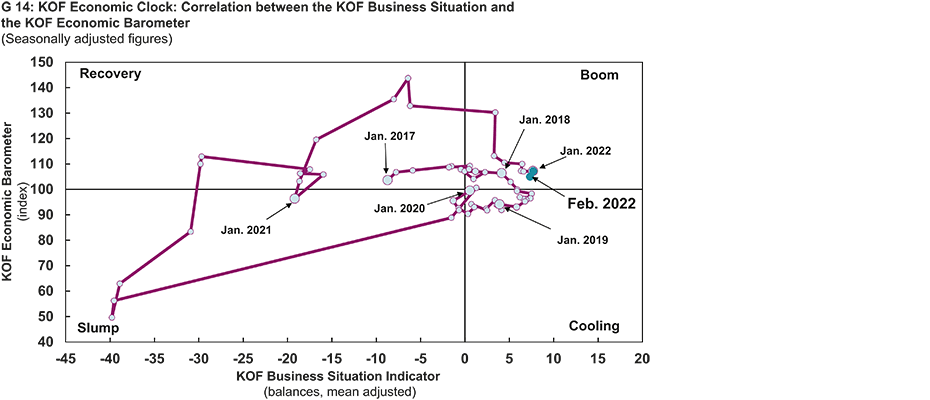KOF business situation virtually unchanged; outlook still encouraging
- KOF Business Situation Indicator
- Swiss Economy
- KOF Bulletin
The latest KOF Business Situation Indicator for the Swiss private sector fell very slightly in February (see G 12). Companies remain virtually unchanged in their confidence about business over the coming six months. Uncertainty about business going forward is also decreasing. The Swiss economy is currently performing well.

The Business Situation Indicator for the manufacturing sector dipped slightly last month. There are divergent trends between domestically orientated firms and export-led companies, with the situation deteriorating for domestically orientated firms and improving among export-led companies. On the whole, companies are trying to use their inventories of finished goods to compensate for production losses. The situation indicator for financial and insurance service providers also fell slightly in February, although it had jumped in the previous month. Business continues to improve in the project engineering and construction sectors, which are linked to building activity. The shortage of materials in this sector of the economy has recently become less of a problem than before. Business in the retail sector is also improving.
When interpreting these results, however, it must be borne in mind that the underlying data was collected before the situation in Ukraine escalated.

Business activity is slowing in the majority of regions – especially in Central Switzerland but also in the Zurich region, Northwestern Switzerland, Ticino and, to a very slight extent, in the Lake Geneva region. Espace Mittelland and Eastern Switzerland are bucking this downward trend.

The KOF Business Situation Indicator highlights companies’ current business situation. The KOF Business Cycle Barometer, on the other hand, is an indicator of the economic outlook. The Business Cycle Clock shows that the economy was abruptly slowed by the pandemic in April 2020. After a rather disappointing start to 2021, the Swiss economy subsequently recovered. This year has so far seen a continuation of the recovery, albeit a weaker one than in the summer of last year.

Explanation:
Chart G 12 shows the KOF Business Situation Indicator across all sectors included in the survey. The business situation of sectors that are only surveyed quarterly is kept constant in the interim months.
Chart G 13 shows the business situation in the main regions as defined by the Swiss Federal Statistical Office. The regions are coloured differently to reflect their business situation. The arrows within the regions indicate the change in the situation compared with the previous month. An upward-pointing arrow indicates that the situation has improved compared with the previous month.
The Business Situation Indicator in the KOF Business Cycle Clock (Chart G 14) is plotted against the KOF Business Cycle Barometer. The indicator reflects the current business situation, while the barometer is a leading indicator of changes in activity. The clock can be divided into quadrants. During the recovery phase the business situation is below average but growth prospects are above average. At the peak of the economic cycle the situation and prospects are both above average. During the slowdown phase the situation is above average and the prospects are below average. At the bottom of the economic cycle the situation and outlook are both below average. Ideally the chart runs through the quadrants in a clockwise direction.
The KOF Business Situation Indicator is based on more than 4,500 reports from firms in Switzerland. Companies in industry, the retail sector, construction, project engineering and financial services and insurance are surveyed monthly. Businesses in the hospitality, wholesale and other services sectors are surveyed during the first month of each quarter. These firms are asked, among other things, to assess their current business situation. They can rate their situation as either ‘good’, ‘satisfactory’ or ‘poor’. The net balance of their current business situation is the difference between the percentages of ‘good’ and ‘poor’ responses.
Contact
KOF Konjunkturforschungsstelle
Leonhardstrasse 21
8092
Zürich
Switzerland